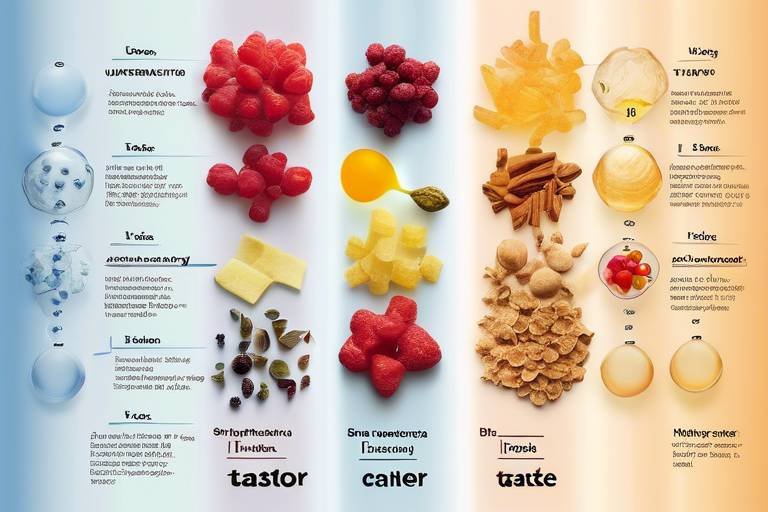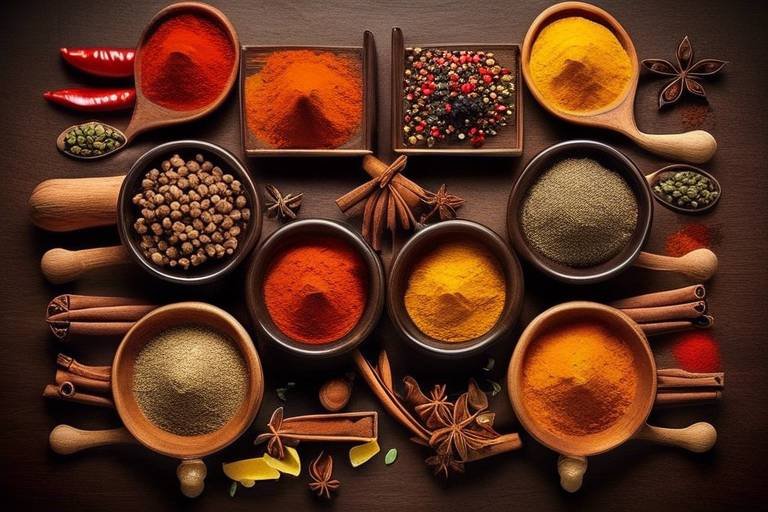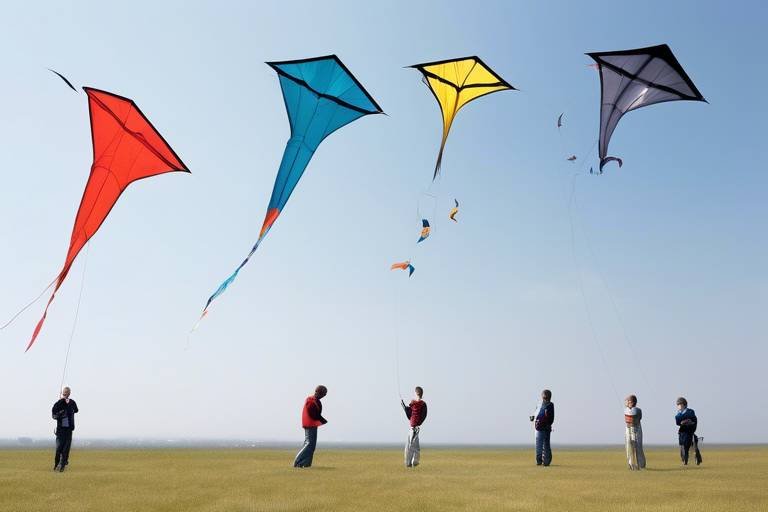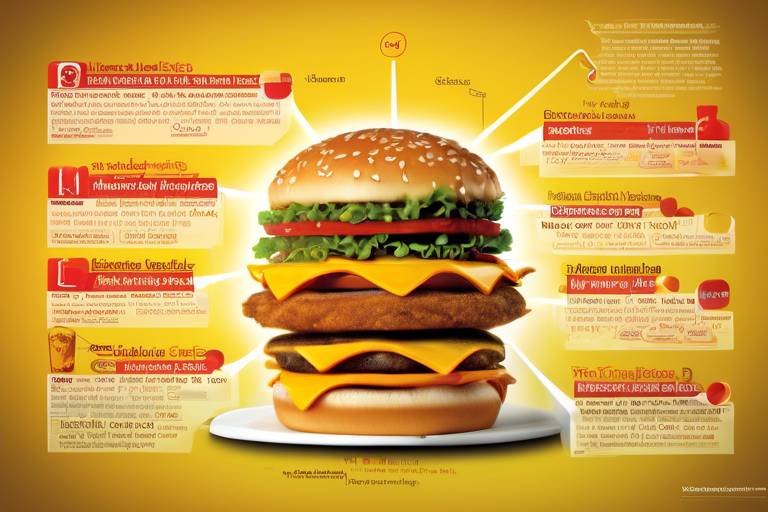The Physics of Solar Cooking - How to Harness the Sun
Have you ever thought about how we can transform sunlight into a delicious meal? Solar cooking is not just a fascinating concept; it's a practical and sustainable cooking method that harnesses the power of the sun. In this article, we will explore the principles of solar cooking, the science behind solar cookers, and how you can easily implement this eco-friendly technique in your kitchen.
Solar energy is a renewable resource that has gained significant attention in recent years, especially as we seek alternatives to traditional energy sources. Imagine the sun as a giant power plant, continuously generating energy that can be captured and utilized. This section will delve into the fundamentals of solar energy, discussing its potential benefits for sustainable living. By harnessing solar energy, we can reduce our carbon footprint and contribute to a cleaner environment. Not only does solar cooking minimize reliance on fossil fuels, but it also promotes energy independence, allowing individuals to cook meals without the need for gas or electricity.
At the heart of solar cooking lies the principles of thermodynamics. Solar cookers operate by converting sunlight into heat, which is then used for cooking. When sunlight strikes the surface of a solar cooker, it is absorbed and converted into thermal energy. This energy is then retained by the cooking vessel, allowing food to cook evenly and efficiently. The effectiveness of solar cookers is influenced by several factors, including the angle of sunlight, the design of the cooker, and the materials used in its construction.
There are various designs of solar cookers, each with unique features and advantages suited for different cooking needs. The three main types include:
- Box Cookers: These are simple, insulated boxes that trap heat to cook food.
- Panel Cookers: These reflect sunlight onto a cooking pot, using flat panels to gather and concentrate heat.
- Parabolic Cookers: These focus sunlight onto a single point, generating high temperatures for quick cooking.
Each type of solar cooker has its own set of benefits, making it essential to choose one that fits your cooking style and needs.
Box solar cookers are among the most popular designs due to their simplicity and effectiveness. Typically constructed from cardboard or wood, these cookers feature an insulated box with a transparent lid that allows sunlight to enter while keeping heat trapped inside. The design is straightforward: place your food in a pot, set it inside the box, and let the sun do the rest. To achieve optimal cooking results, it’s crucial to position the cooker to face the sun directly and adjust its angle throughout the day.
On the other hand, parabolic solar cookers are designed for those who want to cook quickly and efficiently. These cookers use a reflective parabolic dish to concentrate sunlight onto a cooking pot, generating temperatures high enough to fry, boil, or bake food. While they require a bit more setup and skill to operate effectively, the results can be incredibly rewarding. Imagine cooking a meal in just a fraction of the time it would take with traditional methods!
The materials used in solar cooker construction significantly impact their efficiency. Common materials include:
- Reflective Surfaces: Aluminum foil or reflective paint can enhance light concentration.
- Insulation: Styrofoam or fiberglass helps retain heat.
- Transparent Covers: Glass or clear plastic allows sunlight to pass while trapping heat.
Choosing the right materials can greatly improve your solar cooker's performance, ensuring that you maximize the sun's energy for cooking.
Solar cooking offers numerous advantages that make it an appealing choice for many households. Not only does it help save money on fuel costs, but it also provides significant environmental benefits. By reducing reliance on fossil fuels, solar cooking contributes to a decrease in greenhouse gas emissions. Additionally, it allows for cooking without the need for electricity or gas, making it a perfect option for off-grid living or during power outages.
Using solar energy for cooking is a step towards a more sustainable future. By adopting solar cooking methods, we can collectively reduce our carbon footprint and promote cleaner air. Imagine a world where our meals are cooked by the sun instead of contributing to pollution. This shift not only benefits our health but also preserves the planet for future generations.
Investing in solar cooking technology can lead to significant savings over time. While the initial setup may require some investment, the long-term benefits far outweigh the costs. By eliminating the need for traditional fuels, solar cookers can save households considerable amounts on their energy bills. Think of it as an investment in both your wallet and the environment!
1. Can I use a solar cooker on cloudy days?
Yes, solar cookers can still function on cloudy days, although cooking times may be longer. They can capture diffused sunlight effectively.
2. How long does it take to cook food using a solar cooker?
Cooking times vary based on the type of solar cooker and the intensity of sunlight, but it typically takes longer than conventional cooking methods.
3. Are solar cookers safe to use?
Absolutely! Solar cookers are safe and have no risk of fire or burns when used correctly, making them a great option for outdoor cooking.
4. What types of food can I cook with a solar cooker?
You can cook a wide variety of foods, including grains, vegetables, and even baked goods. The possibilities are endless!
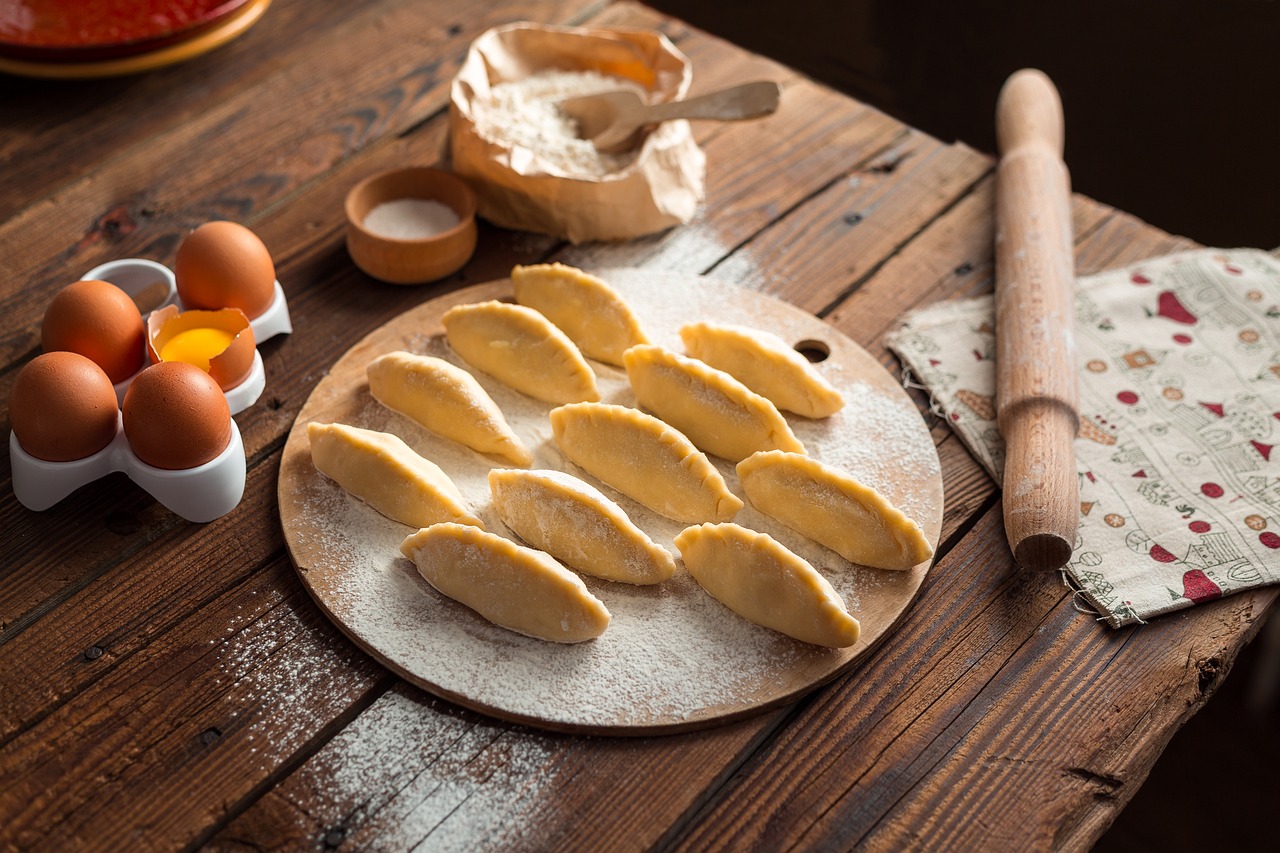
Understanding Solar Energy
Solar energy is the radiant energy emitted by the sun, and it is one of the most abundant renewable resources available on our planet. Imagine the sun as a giant power plant, continuously providing energy that can be harnessed for various applications, including cooking. The beauty of solar energy lies not only in its abundance but also in its potential to promote sustainable living. By utilizing this natural resource, we can reduce our dependence on fossil fuels, lower greenhouse gas emissions, and save money on energy costs.
At its core, solar energy is derived from the nuclear fusion that occurs in the sun's core, where hydrogen atoms combine to form helium, releasing immense amounts of energy in the process. This energy travels through space and reaches the Earth, where it can be captured and converted into usable forms. There are two primary methods to harness solar energy: photovoltaics and solar thermal systems.
Photovoltaics convert sunlight directly into electricity using solar panels, while solar thermal systems capture heat from sunlight to generate thermal energy. For cooking, solar thermal systems are particularly effective. They work by using reflective surfaces to concentrate sunlight, generating heat that can be used to cook food. This method is not only efficient but also incredibly eco-friendly, as it produces no emissions and relies on a free and abundant resource.
One of the most exciting aspects of solar energy is its accessibility. You don't need to live in a sunny region to benefit from solar cooking. With the right design and technology, solar cookers can be effective even in partially cloudy conditions. Additionally, solar cookers can be built from simple materials, making them an affordable option for many households.
In terms of benefits, solar cooking offers a myriad of advantages:
- Environmental Benefits: By reducing reliance on traditional fuels, solar cooking helps to decrease air pollution and conserve natural resources.
- Health Benefits: Cooking with solar energy reduces indoor air pollution, which can lead to respiratory issues, especially in developing countries.
- Cost Savings: Once you invest in a solar cooker, you can significantly cut down on fuel costs over time.
- Convenience: Solar cookers require minimal supervision and can be left to cook while you attend to other tasks.
As we continue to explore the principles of solar cooking, it’s essential to recognize the role of solar energy in our quest for a sustainable future. By harnessing the sun's power, we not only cook our meals but also contribute to a healthier planet. So, why not take advantage of this incredible resource? With a little creativity and understanding, solar cooking can become a staple in our kitchens, transforming the way we prepare food and interact with our environment.
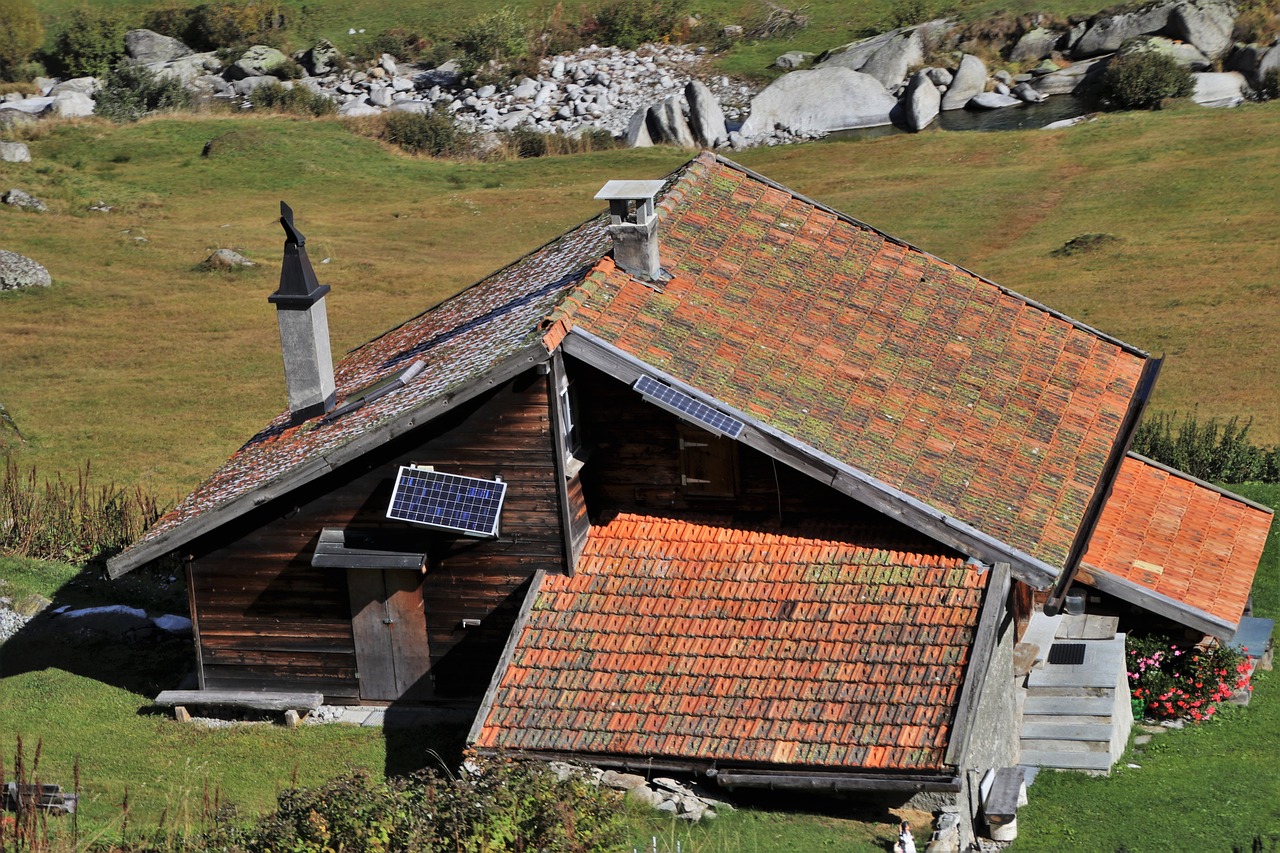
The Science Behind Solar Cookers
Solar cookers are fascinating devices that utilize the sun’s energy to cook food, and their operation is rooted in the principles of thermodynamics. At the core of solar cooking is the transformation of sunlight into heat, which is then used to prepare meals. When sunlight strikes the surface of a solar cooker, it is absorbed and converted into thermal energy, raising the temperature inside the cooker. This process is akin to how a greenhouse works, trapping heat to create a warm environment. The efficiency of solar cookers can vary based on design, materials, and the angle at which they are positioned relative to the sun.
One of the key principles at play here is the Greenhouse Effect. Just like a greenhouse, solar cookers are designed to trap heat. They often include reflective surfaces that direct sunlight into a cooking chamber, which can be insulated to retain heat. This combination of reflection and insulation allows solar cookers to reach temperatures sufficient for cooking, baking, and even boiling water. The effectiveness of these cookers can be enhanced by positioning them correctly and adjusting them throughout the day to follow the sun's path.
Solar cookers come in various designs, each utilizing different scientific principles to maximize heat absorption and retention. For instance, box cookers are typically made of insulated boxes with a transparent lid that lets sunlight in while trapping heat. On the other hand, parabolic cookers use a curved reflective surface to concentrate sunlight to a focal point, generating much higher temperatures rapidly. This means that while box cookers are great for slow cooking, parabolic cookers are ideal for quick meals. Understanding these designs can help users choose the right type of solar cooker for their needs.
Moreover, the materials used in solar cooker construction significantly impact their efficiency. Common materials include glass, metal, and various insulative materials. Each of these materials has unique thermal properties that can either enhance or hinder the cooking process. For example, glass is often used for the lid of box cookers due to its transparency and ability to withstand high temperatures, while metals like aluminum are favored for their excellent heat conduction in parabolic cookers. Here’s a quick comparison of some materials:
| Material | Thermal Conductivity | Common Use |
|---|---|---|
| Glass | Low | Cooker lids |
| Aluminum | High | Reflective surfaces |
| Wood | Low | Insulation |
| Foam | Very Low | Insulation |
In conclusion, the science behind solar cookers is a beautiful blend of physics and creativity. By harnessing the sun’s energy and understanding the underlying principles of heat transfer, anyone can cook delicious meals while promoting sustainability. So, whether you're camping, enjoying a sunny day at home, or looking to reduce your carbon footprint, solar cooking offers an exciting and effective way to prepare food using the power of the sun.
- How long does it take to cook food in a solar cooker? Cooking times vary based on the type of cooker, the intensity of sunlight, and the type of food. Generally, it can take anywhere from 30 minutes to several hours.
- Can I use a solar cooker on cloudy days? Yes, solar cookers can still work on overcast days, although cooking times will be longer.
- What types of food can I cook in a solar cooker? You can cook a variety of foods, including vegetables, rice, stews, and even baked goods!
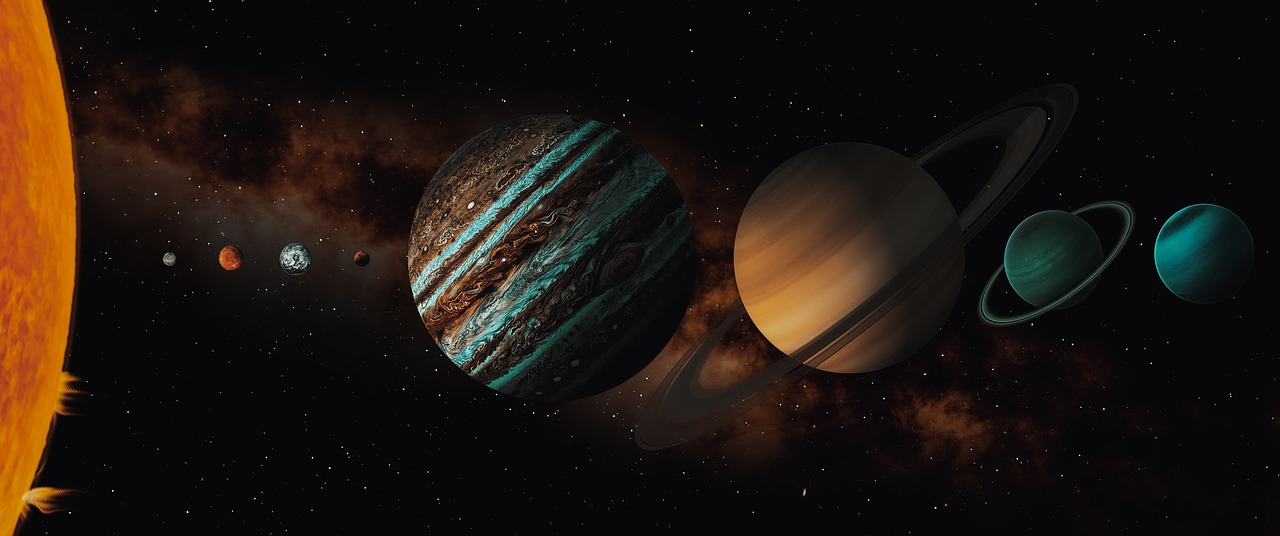
Types of Solar Cookers
When it comes to solar cooking, the variety of solar cookers available is as diverse as the culinary creations you can whip up with them. Each type of solar cooker offers unique features and advantages, making them suitable for various cooking needs and environments. Understanding these different types can help you choose the right one for your solar cooking adventure. Let's dive into the main types of solar cookers: box cookers, panel cookers, and parabolic cookers.
Box Solar Cookers are perhaps the most common type of solar cooker. They consist of an insulated box with a transparent top that traps sunlight inside, creating a greenhouse effect. The design is simple yet effective, allowing for slow cooking of meals. Box cookers can reach temperatures of around 200°F (93°C), making them ideal for baking, steaming, and slow-cooking dishes. To get the best results, it's essential to position the cooker correctly to capture maximum sunlight. These cookers are particularly beneficial for families or groups, as they can accommodate larger quantities of food.
Panel Solar Cookers, on the other hand, are lightweight and portable, making them perfect for outdoor activities like camping or picnicking. They consist of reflective panels that direct sunlight onto a cooking pot. While they may not achieve the high temperatures of box or parabolic cookers, they are still effective for tasks like boiling water or cooking simple meals. Panel cookers are easy to assemble and disassemble, which adds to their convenience. However, keep in mind that they require consistent adjustments to follow the sun throughout the day.
Parabolic Solar Cookers are the high-performance athletes of the solar cooker world. These cookers use a parabolic reflector to concentrate sunlight onto a single point, achieving temperatures that can exceed 400°F (204°C). This makes them perfect for frying, grilling, and even baking. The construction of parabolic cookers can be a bit more complex, often requiring more materials and assembly time. However, the efficiency and speed at which they cook make them a favorite among experienced solar cooks. If you’re looking to whip up a meal quickly, a parabolic cooker is the way to go.
Each type of solar cooker has its own set of strengths and weaknesses. To help you better understand their differences, here’s a quick comparison:
| Type of Cooker | Temperature Range | Best For | Portability |
|---|---|---|---|
| Box Cooker | Up to 200°F (93°C) | Baking, Steaming | Moderate |
| Panel Cooker | Up to 250°F (121°C) | Boiling, Simple Meals | High |
| Parabolic Cooker | Up to 400°F (204°C) | Frying, Grilling | Low |
In summary, the type of solar cooker you choose can significantly impact your cooking experience. Whether you prefer the simplicity of a box cooker, the portability of a panel cooker, or the high efficiency of a parabolic cooker, there's a solar cooking option that can fit your needs. So, why not take advantage of the abundant sunlight and explore the delicious possibilities that solar cooking has to offer?
- How long does it take to cook food using a solar cooker? Cooking times vary based on the type of cooker and the intensity of sunlight, but generally, expect longer cooking times compared to conventional methods.
- Can I use a solar cooker on cloudy days? Yes, solar cookers can still function on cloudy days, but they will be less efficient. It's best to use them on clear, sunny days for optimal results.
- Are solar cookers safe to use? Absolutely! Solar cookers are safe and eco-friendly, utilizing sunlight as their primary energy source, which reduces the risk of fire hazards associated with traditional cooking methods.
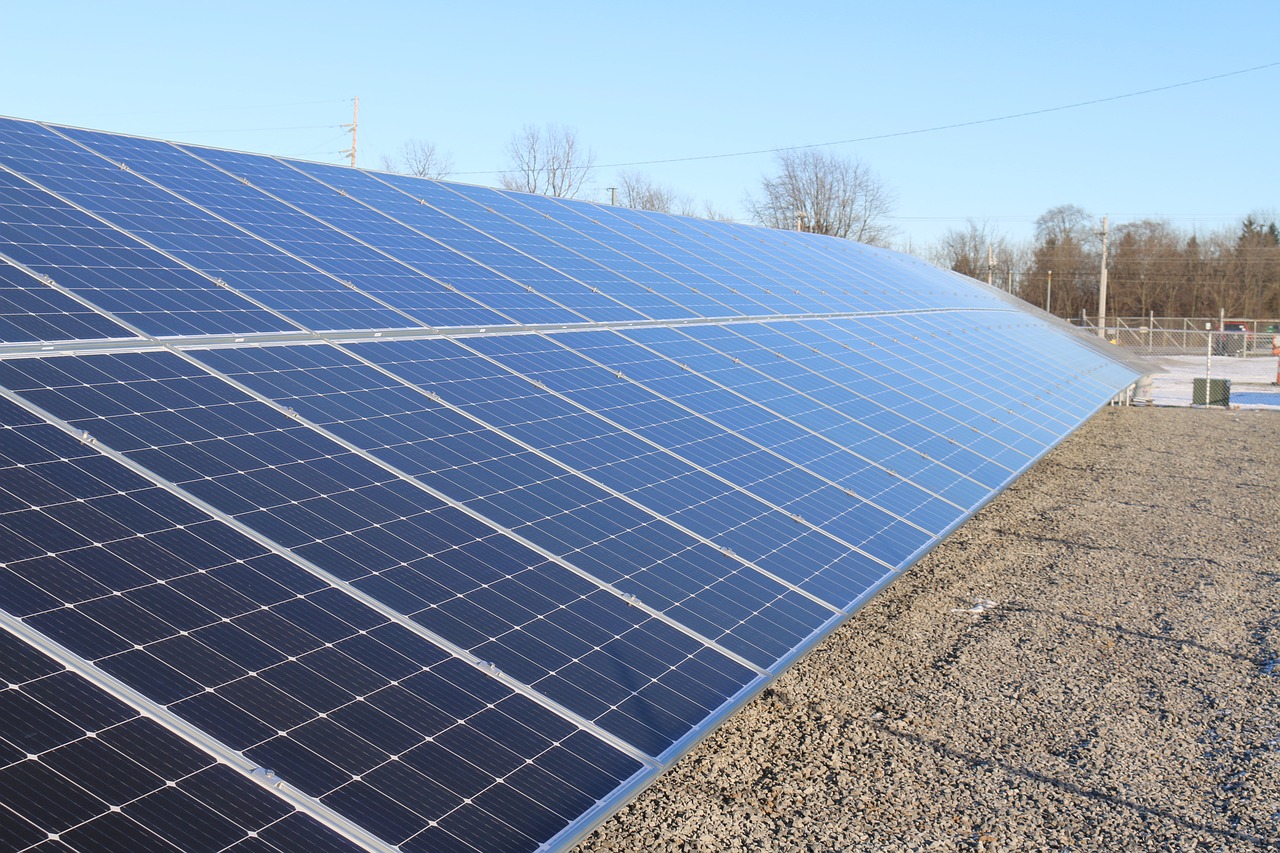
Box Solar Cookers
Box solar cookers are a fantastic and straightforward way to harness solar energy for cooking. These cookers are designed with a simple box-like structure, usually made from materials that reflect sunlight, such as aluminum foil or reflective mylar. The basic principle behind a box solar cooker is to trap sunlight and convert it into heat, which then cooks the food inside. Imagine the sun as a giant oven, and the box cooker as the perfect baking dish that captures all that glorious heat!
The design of a box solar cooker typically includes an insulated box with a transparent lid, allowing sunlight to enter while minimizing heat loss. The insulation plays a crucial role in maintaining high temperatures inside the cooker, making it efficient for various cooking tasks. In fact, box solar cookers can reach temperatures of up to 250°F (121°C) on a sunny day, which is sufficient for baking, boiling, and steaming a variety of dishes.
One of the best things about box solar cookers is their versatility. They can be used to prepare a wide range of meals, from baked goods like bread and cookies to hearty soups and stews. The cooking process is not only energy-efficient but also adds a unique flavor to the food, often producing a taste that is hard to replicate with conventional cooking methods.
To get the most out of your box solar cooker, consider the following best practices:
- Positioning: Place the cooker in a location where it can receive direct sunlight for the longest period possible. Adjust the angle throughout the day to maximize sun exposure.
- Cooking Time: Cooking times may vary significantly depending on the intensity of sunlight. It’s a good idea to start cooking early in the day and plan for longer cooking times.
- Use Dark Pots: Dark-colored pots absorb heat more effectively than light-colored ones. Opt for dark, non-reflective cookware to enhance cooking efficiency.
In terms of construction, box solar cookers can be made from readily available materials, making them an accessible option for many households. You can create a simple box cooker using cardboard, aluminum foil, and a transparent cover like glass or plastic. This DIY approach not only saves money but also promotes sustainability by using materials that might otherwise go to waste.
In conclusion, box solar cookers are an excellent introduction to solar cooking for beginners. They are easy to build, straightforward to use, and can provide delicious, healthy meals using just the power of the sun. Whether you’re looking to reduce your energy bills or simply want to experiment with a new cooking method, a box solar cooker is a fantastic option to consider!
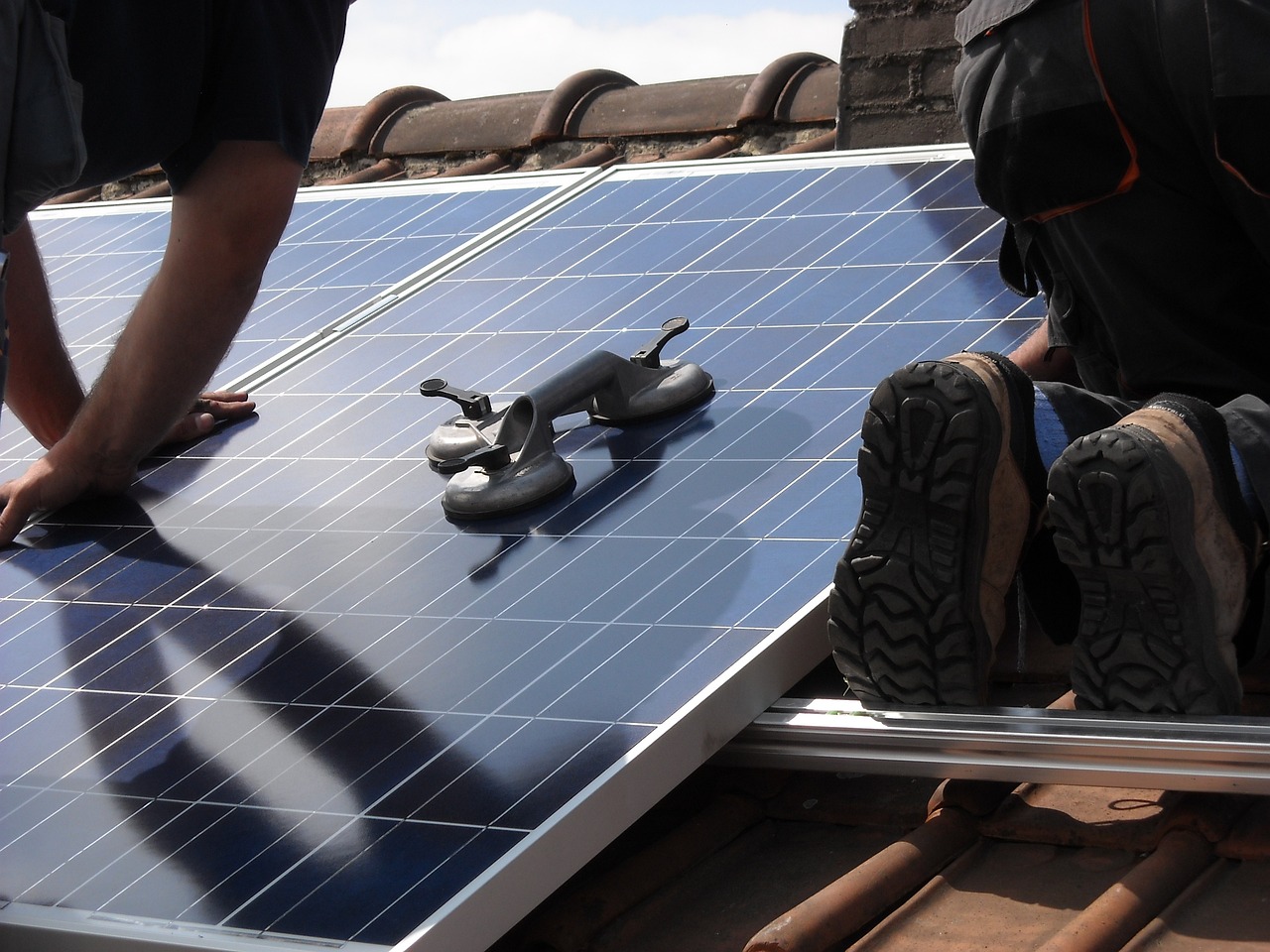
Parabolic Solar Cookers
Parabolic solar cookers are fascinating devices that utilize the sun's energy in a highly efficient manner. Imagine a giant satellite dish, but instead of receiving signals, it captures sunlight and focuses it to generate heat. This design is based on the principle of concentration, where the curved surface of the parabolic reflector directs sunlight to a single focal point, achieving remarkably high temperatures. These cookers can reach temperatures exceeding 350°C (662°F), making them ideal for cooking foods that require intense heat, such as frying or boiling.
The construction of a parabolic solar cooker typically involves a reflective surface, often made from materials like aluminum foil or polished metal, which is shaped into a parabolic form. The focal point, where the heat is concentrated, usually holds a pot or pan. One of the significant advantages of parabolic solar cookers is their speed. They can cook meals in a fraction of the time compared to other solar cooking methods, making them perfect for those who want to enjoy a hot meal without waiting for hours.
However, using a parabolic solar cooker does come with its own set of challenges. For instance, they require direct sunlight and need to be adjusted periodically to follow the sun's movement across the sky. This might seem like a hassle, but it's a small price to pay for the benefits they offer. Additionally, because they generate such high temperatures, it's essential to use heat-resistant cookware and take safety precautions to avoid burns.
To maximize the effectiveness of a parabolic solar cooker, consider the following tips:
- Location is key: Set up your cooker in an area with unobstructed sunlight for most of the day.
- Adjust regularly: Keep an eye on the sun's position and adjust the angle of the cooker to maintain optimal focus.
- Use appropriate cookware: Opt for dark, matte-finished pots that absorb heat efficiently.
In conclusion, parabolic solar cookers represent a brilliant fusion of technology and nature, allowing us to harness the sun's power for cooking. They are not only efficient but also a sustainable choice that reduces our reliance on fossil fuels. So, if you're looking to cook quickly and sustainably, a parabolic solar cooker might just be the right tool for you!
1. Can parabolic solar cookers work on cloudy days?
While they perform best in direct sunlight, parabolic solar cookers can still function on cloudy days, although the cooking time will be significantly longer.
2. What types of food can I cook with a parabolic solar cooker?
You can prepare a wide range of foods, including meats, vegetables, and even baked goods. Just ensure that the cooking time is adjusted according to the heat generated.
3. Are parabolic solar cookers safe to use?
Yes, they are safe as long as you follow basic safety precautions, such as using heat-resistant cookware and being cautious around the high temperatures they generate.
4. How do I maintain my parabolic solar cooker?
Keep the reflective surface clean and free from debris to ensure maximum efficiency. Regularly check for any wear and tear in the materials used.
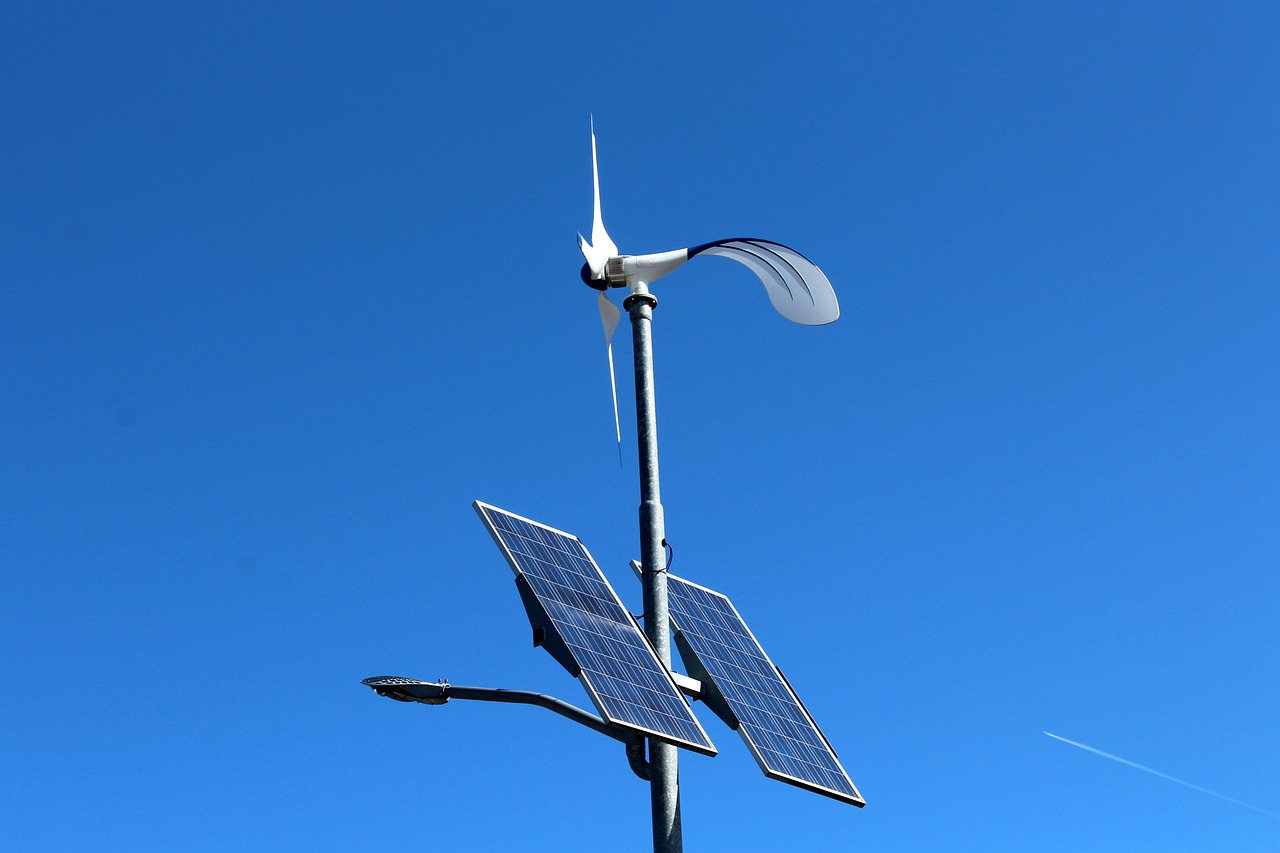
Materials for Solar Cookers
When it comes to building an efficient solar cooker, the choice of materials plays a crucial role in determining its performance. Just like a chef selects the finest ingredients for a meal, you must carefully pick the right materials to harness the sun's energy effectively. The primary goal is to maximize heat absorption and minimize heat loss. Let's dive into the essential materials used in solar cookers and their thermal properties.
One of the most common materials used in solar cookers is glass. Glass is not only durable but also allows sunlight to pass through while trapping heat inside. It acts like a greenhouse, creating a warm environment for cooking. When selecting glass, look for tempered glass, as it can withstand higher temperatures and is less likely to break. Additionally, the thickness of the glass can affect heat retention; thicker glass generally provides better insulation.
Another vital component is the reflective material. This is crucial for directing sunlight toward the cooking area. Common reflective materials include aluminum foil, Mylar film, and polished stainless steel. Each of these materials has distinct properties:
| Material | Reflectivity | Durability |
|---|---|---|
| Aluminum Foil | High | Low |
| Mylar Film | Very High | Medium |
| Polished Stainless Steel | Moderate | High |
While aluminum foil is inexpensive and easy to use, it may not last long in outdoor conditions. Mylar film offers excellent reflectivity but can be less durable than stainless steel. On the other hand, polished stainless steel is robust and can withstand the elements, making it a great long-term investment for your solar cooker.
In addition to these materials, the insulation used in solar cookers is equally important. Insulation helps retain the heat generated within the cooker, ensuring that your food cooks evenly and efficiently. Common insulating materials include Styrofoam, fiberglass, and even wool. Each of these materials has unique thermal properties that can affect the overall efficiency of your solar cooker:
- Styrofoam: Lightweight and offers excellent insulation.
- Fiberglass: Highly effective but can be cumbersome to handle.
- Wool: An eco-friendly option that provides decent insulation.
Lastly, the cooking pot you choose can make a significant difference in your solar cooking experience. Dark-colored pots are preferable as they absorb heat better than lighter colors. Materials like cast iron or heavy-duty stainless steel are excellent choices because they can withstand high temperatures and retain heat effectively. Avoid using glass pots, as they can break under extreme heat.
In conclusion, selecting the right materials for your solar cooker is crucial for optimizing its efficiency and effectiveness. By understanding the properties and benefits of each material, you can build a solar cooker that not only harnesses the sun's energy but also provides you with deliciously cooked meals. So, whether you're a DIY enthusiast or just looking to experiment with solar cooking, remember that the right materials can make all the difference!
- What are the best materials for building a solar cooker? The best materials include tempered glass for the cover, reflective materials like aluminum foil or polished stainless steel, and good insulation such as Styrofoam or fiberglass.
- Can I use any pot for solar cooking? It's recommended to use dark-colored pots made of materials like cast iron or heavy-duty stainless steel for better heat absorption.
- How long does it take to cook food using a solar cooker? Cooking times vary depending on the sunlight intensity, but generally, it can take anywhere from 30 minutes to several hours.
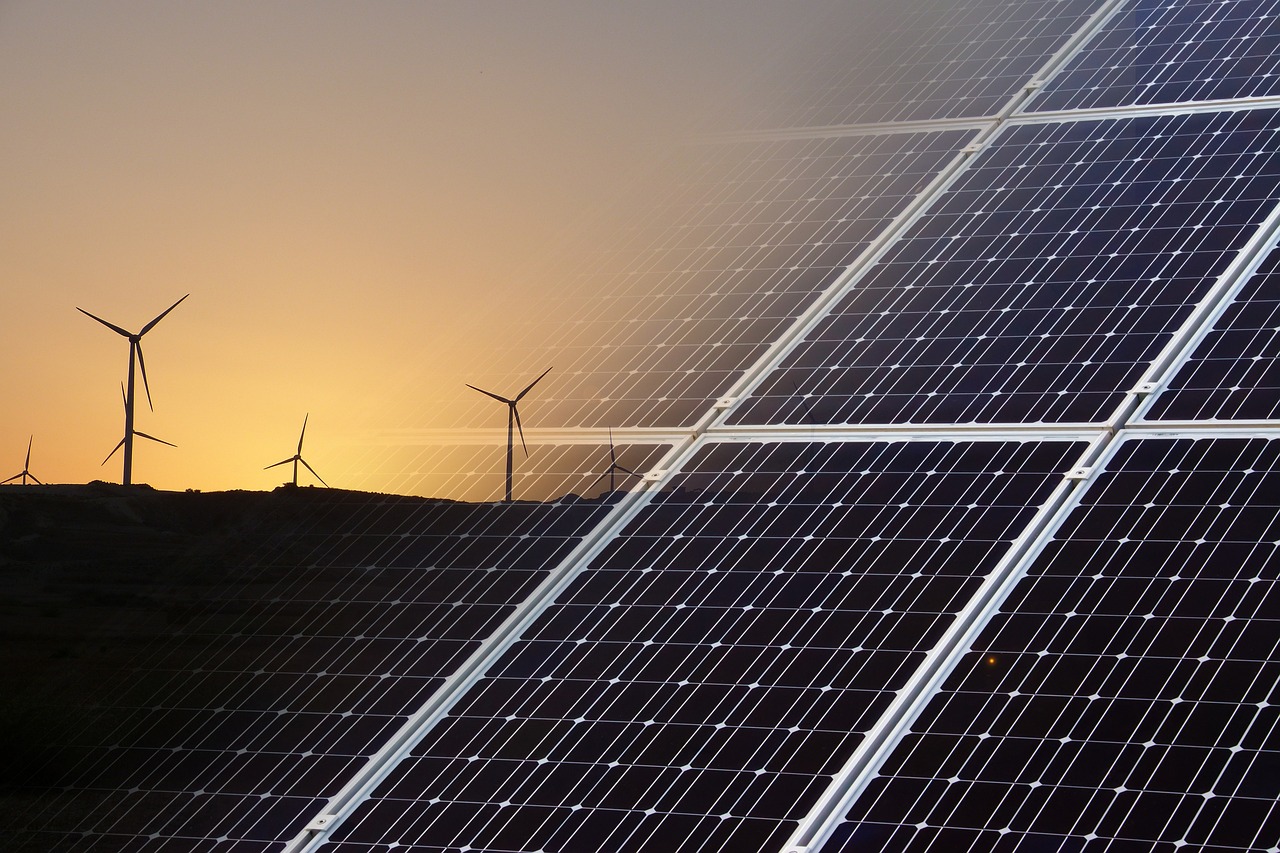
Benefits of Solar Cooking
Solar cooking is not just a trendy topic in the eco-friendly community; it’s a transformative approach that can revolutionize how we prepare our meals while caring for our planet. Imagine harnessing the sun’s energy, the very same source that warms our skin on a sunny day, to cook delicious meals without burning fossil fuels. The benefits of solar cooking extend far beyond just saving a few bucks on your energy bill. Let's dive into the numerous advantages that make solar cooking a compelling choice for every household.
First and foremost, one of the most significant benefits of solar cooking is its environmental impact. By using solar energy instead of conventional fuels, we drastically reduce our carbon footprint. This shift not only helps in combating climate change but also minimizes air pollution. Traditional cooking methods often involve the burning of wood or fossil fuels, which release harmful emissions into the atmosphere. In contrast, solar cookers emit no pollutants, making them a clean and sustainable option.
Additionally, solar cooking promotes sustainable living. It encourages individuals and families to embrace renewable energy sources, which are abundant and free. By opting for solar cooking, you are effectively participating in a movement that prioritizes the health of our planet over convenience. It’s like planting a tree for future generations—an act of love and responsibility.
Another remarkable advantage of solar cooking is its cost-effectiveness. While the initial investment in a solar cooker may seem daunting, the long-term savings are undeniable. Consider the following:
| Cooking Method | Initial Cost | Annual Fuel Cost | Total Cost Over 5 Years |
|---|---|---|---|
| Traditional Cooking | $100 | $200 | $1,100 |
| Solar Cooking | $200 | $0 | $200 |
As illustrated in the table above, while traditional cooking methods may have a lower initial cost, the ongoing expenses can add up significantly over time. In contrast, once you invest in a solar cooker, your fuel costs drop to zero, making it a financially savvy choice in the long run.
Moreover, solar cooking is incredibly versatile. You can prepare a wide range of dishes, from slow-cooked stews to baked goods, all while enjoying the sunshine. The adaptability of solar cookers means they can be used in various settings, whether you’re at home, camping, or even in emergency situations where conventional cooking methods are unavailable. The ability to cook without electricity or gas is not just a convenience; it’s a lifesaver in many scenarios.
Lastly, let’s not overlook the health benefits associated with solar cooking. Since solar cookers operate at lower temperatures, they help retain more nutrients in the food. This means you’re not only saving money and the environment but also enhancing the nutritional value of your meals. Cooking with solar energy can be likened to a gentle hug for your food, preserving its goodness while it cooks.
In summary, the benefits of solar cooking are abundant and impactful. From reducing environmental harm and cutting costs to promoting health and versatility, solar cooking is a sustainable choice that everyone can embrace. So, why not give it a try? You might just find that the sun is your new best friend in the kitchen!
- How does a solar cooker work? A solar cooker uses sunlight to heat and cook food, utilizing reflective surfaces to concentrate solar energy.
- Can I cook all types of food using a solar cooker? Yes, solar cookers can be used to prepare a variety of dishes, including soups, stews, and baked goods.
- Are solar cookers effective in cloudy weather? While they are less effective, many solar cookers can still function in overcast conditions, albeit at a slower cooking rate.
- How long does it take to cook food with a solar cooker? Cooking times can vary based on the type of food and the intensity of sunlight, but generally, they take longer than conventional methods.
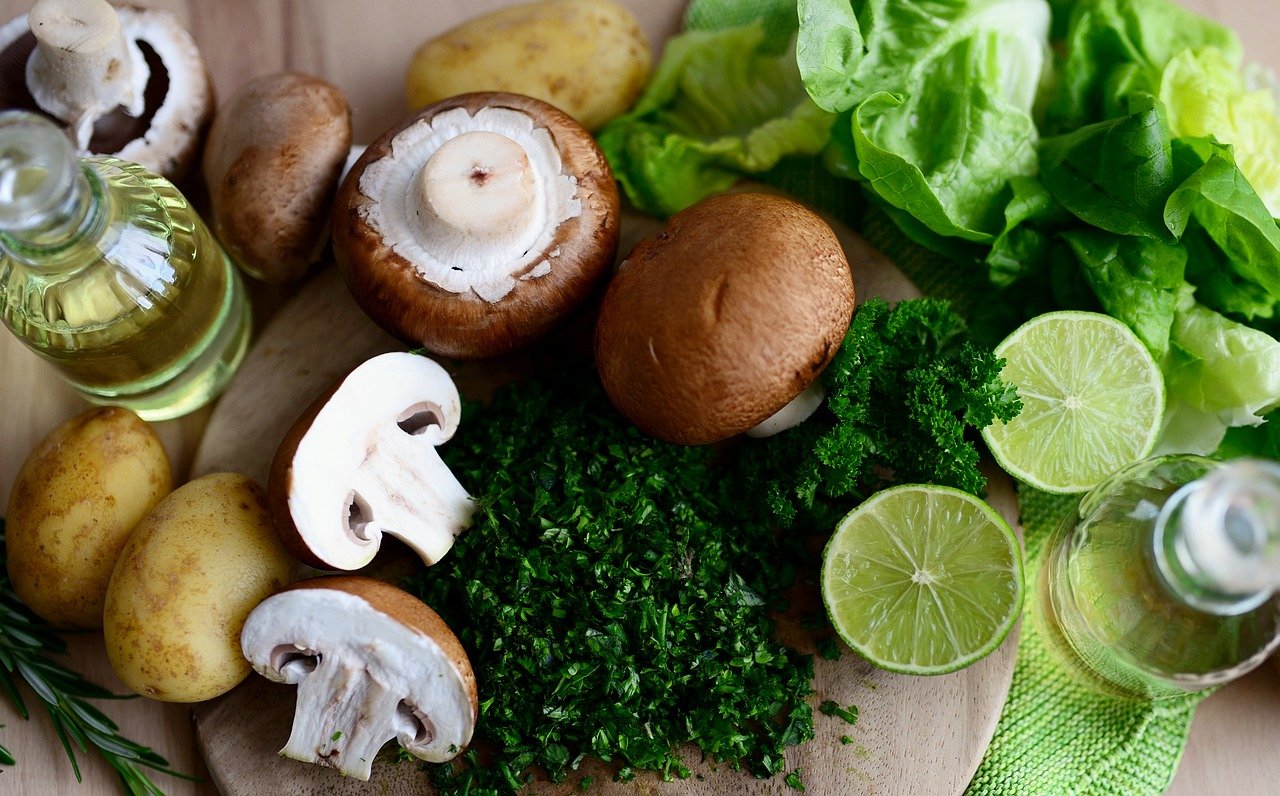
Environmental Impact
When we consider the of cooking methods, solar cooking emerges as a champion of sustainability. By harnessing the power of the sun, we can significantly reduce our reliance on fossil fuels, which are notorious for their negative effects on our planet. Imagine a world where our meals are cooked using nothing but the sun's rays—no smoke, no emissions, just pure, clean energy! This simple shift can lead to profound changes in our environment.
One of the most compelling aspects of solar cooking is its ability to lower greenhouse gas emissions. Traditional cooking methods, especially those that rely on wood, charcoal, or gas, contribute to air pollution and climate change. In contrast, solar cookers operate without any emissions, making them a clean alternative that promotes better air quality. To illustrate this point, consider the following benefits:
- Reduction of Deforestation: Many households in developing areas depend on firewood for cooking, leading to significant deforestation. By switching to solar cooking, we can help preserve our forests.
- Less Air Pollution: Solar cookers do not produce smoke, which means less respiratory issues for families and communities.
- Lower Carbon Footprint: Using solar energy reduces the overall carbon footprint associated with cooking.
Moreover, solar cooking can play a crucial role in conserving water. Traditional cooking methods often require substantial amounts of water for cleaning and cooking processes, especially when using certain types of fuel. Solar cookers, on the other hand, are more efficient and require less water, thereby contributing to water conservation efforts. This is particularly important in arid regions where water scarcity is a pressing issue.
It's also worth mentioning that solar cooking promotes a more sustainable lifestyle. By utilizing a renewable energy source, we are not only reducing our environmental impact but also setting an example for future generations. Teaching children about solar cooking can inspire them to think critically about energy use and environmental stewardship. It’s like planting a seed of awareness that can grow into a forest of sustainable practices.
In summary, the environmental impact of solar cooking is overwhelmingly positive. By embracing this technology, we can reduce our carbon emissions, conserve natural resources, and inspire a culture of sustainability. The sun is a powerful ally in our fight against climate change, and solar cooking is a brilliant way to harness its energy for a healthier planet.
Q: How does solar cooking impact the environment?
A: Solar cooking reduces reliance on fossil fuels, lowers greenhouse gas emissions, and helps conserve natural resources like water and forests.
Q: Can solar cookers be used in all weather conditions?
A: While solar cookers are most effective on sunny days, they can still function in cloudy conditions, although cooking times may be longer.
Q: Are solar cookers safe to use?
A: Yes, solar cookers are safe to use. They do not produce harmful emissions and reduce the risk of fire associated with traditional cooking methods.
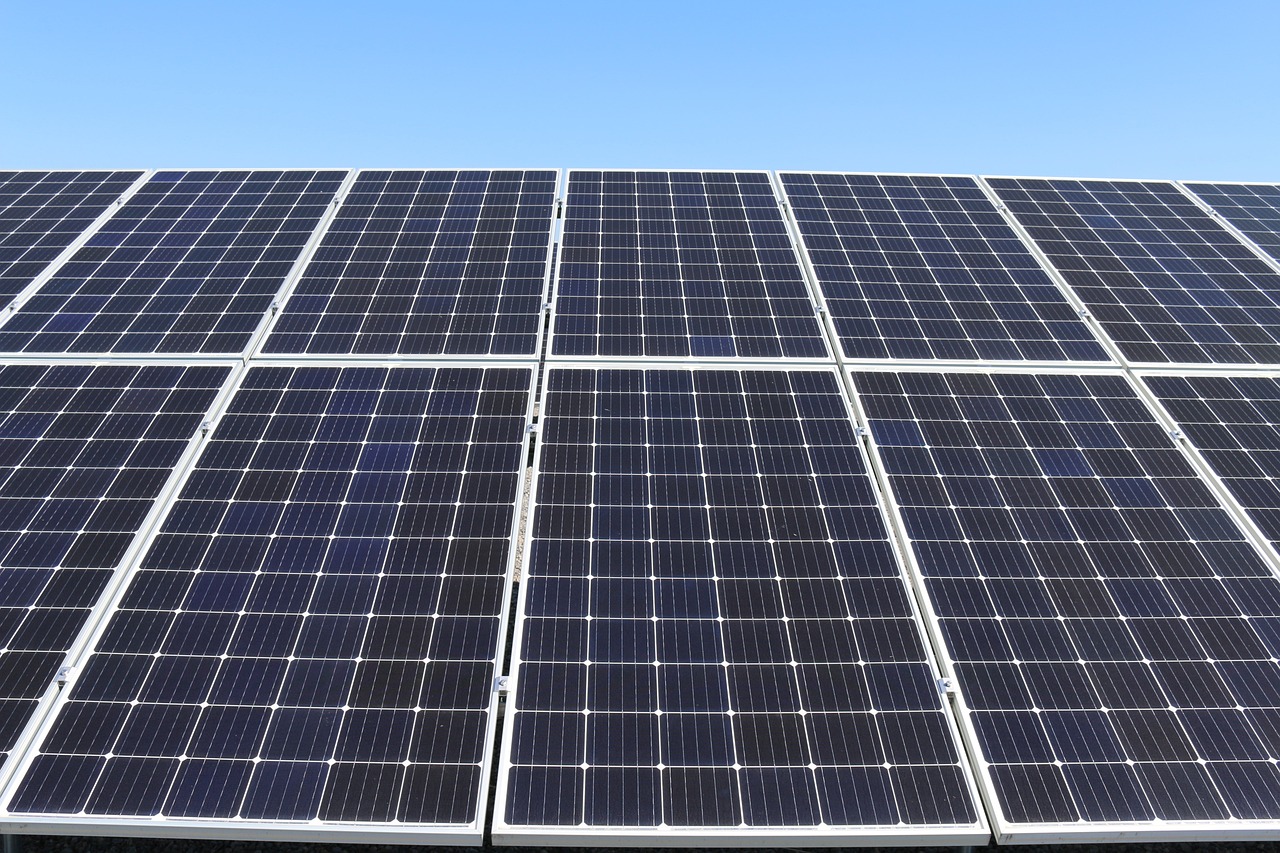
Cost-Effectiveness
When it comes to cooking, we often overlook the long-term costs associated with traditional energy sources. Solar cooking emerges as a beacon of hope, not just for the environment but also for our wallets. Imagine a world where you can cook delicious meals without constantly worrying about skyrocketing fuel prices. Sounds appealing, right? With solar cookers, this dream can become a reality!
One of the most compelling aspects of solar cooking is its . Initially, you might think that investing in a solar cooker could be expensive. However, when you break down the numbers, the savings can be significant over time. Let’s consider the costs associated with traditional cooking methods:
| Cooking Method | Average Monthly Cost | Annual Cost |
|---|---|---|
| Gas Stove | $30 | $360 |
| Electric Stove | $50 | $600 |
| Solar Cooker | $0 | $0 |
As you can see, the annual costs for traditional cooking methods can add up quickly. By switching to a solar cooker, you can effectively eliminate those costs. You might be wondering, “What about the initial investment?” While it’s true that purchasing a solar cooker may require some upfront cash, the long-term savings on fuel can easily offset that expense.
Moreover, solar cookers are incredibly low maintenance. Once you have your solar cooker set up, it requires minimal upkeep. Unlike gas or electric stoves, which may require repairs and maintenance, solar cookers are straightforward and durable. This means fewer unexpected costs in the long run!
Let’s not forget about the added bonus of environmental savings. By choosing solar cooking, you’re not just saving money; you’re also reducing your carbon footprint. This can lead to potential savings on taxes or incentives offered by governments promoting green energy solutions. It’s a win-win situation!
In conclusion, the cost-effectiveness of solar cooking is evident. By investing in a solar cooker, you can enjoy delicious meals without the burden of fuel costs, maintenance expenses, or environmental guilt. So why not take the leap? Your wallet and the planet will thank you!
- How much does a solar cooker cost? Solar cookers can range from $50 to several hundred dollars, depending on the type and features.
- Can I cook all types of food with a solar cooker? Yes! Solar cookers can be used to prepare a wide variety of dishes, from stews to baked goods.
- How long does it take to cook food with a solar cooker? Cooking times vary based on the type of food and the intensity of sunlight, but it generally takes longer than traditional methods.
- Do I need direct sunlight to use a solar cooker? Yes, solar cookers work best in direct sunlight, so it's ideal to use them on clear, sunny days.
Frequently Asked Questions
- What is solar cooking?
Solar cooking is the process of using sunlight to cook food. It harnesses solar energy through various types of cookers, which convert sunlight into heat, allowing you to prepare meals without traditional fuel sources.
- How do solar cookers work?
Solar cookers operate on the principles of thermodynamics. They capture sunlight and convert it into heat, which is then used to cook food. Depending on the design, they can focus sunlight to achieve high temperatures or simply trap heat within an insulated box.
- What are the different types of solar cookers?
There are several types of solar cookers, including box cookers, panel cookers, and parabolic cookers. Each type has its own unique design and cooking capabilities, making them suitable for different cooking styles and needs.
- Can I use solar cookers in all weather conditions?
While solar cookers are most effective on sunny days, they can still be used in cloudy weather, albeit with reduced efficiency. It's essential to understand that the intensity of sunlight directly affects cooking times.
- Are solar cookers safe to use?
Yes, solar cookers are generally safe to use. They do not produce harmful emissions like traditional cooking methods and operate at lower temperatures, reducing the risk of burns. However, caution should be exercised when handling hot cookware.
- What types of food can I cook using solar cookers?
You can cook a wide variety of foods using solar cookers, including stews, soups, rice, and even baked goods. The key is to adjust cooking times and methods according to the specific cooker design and sunlight conditions.
- How much does a solar cooker cost?
The cost of solar cookers can vary widely depending on the design and materials used. Basic box cookers can be made at home for little to no cost, while more advanced models can range from $50 to several hundred dollars.
- Do solar cookers require any maintenance?
Solar cookers are relatively low-maintenance. Regular cleaning of the reflective surfaces is essential to ensure optimal performance. Additionally, checking for any wear and tear on the materials can help prolong the life of the cooker.
- Can I use a solar cooker in winter?
Absolutely! Solar cookers can be used in winter, but their efficiency may decrease due to shorter days and lower sun angles. However, with proper positioning and clear skies, you can still enjoy solar cooking even in colder months.
- What are the environmental benefits of solar cooking?
Solar cooking significantly reduces reliance on fossil fuels, leading to lower greenhouse gas emissions. It promotes sustainable living by utilizing a renewable energy source, which is abundant and free, making it an eco-friendly alternative to traditional cooking methods.


